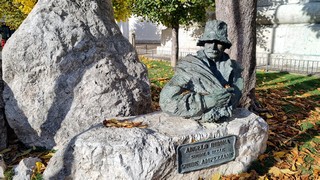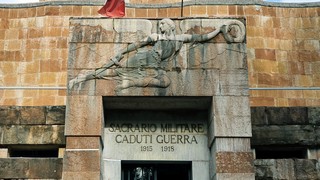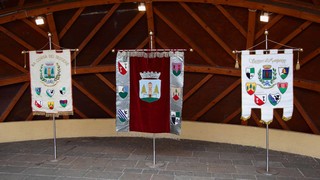Introduction
The bell tower of Cortina, known as "el Cianpanín" in the traditional dialect, with its seventy-three meters, or two hundred and forty feet, of height, is without a doubt the most representative symbol of Cortina, as well as a representation of the pride and state of well-being achieved by the town in 1800. Let's discover together the history of its construction and some curiosities.
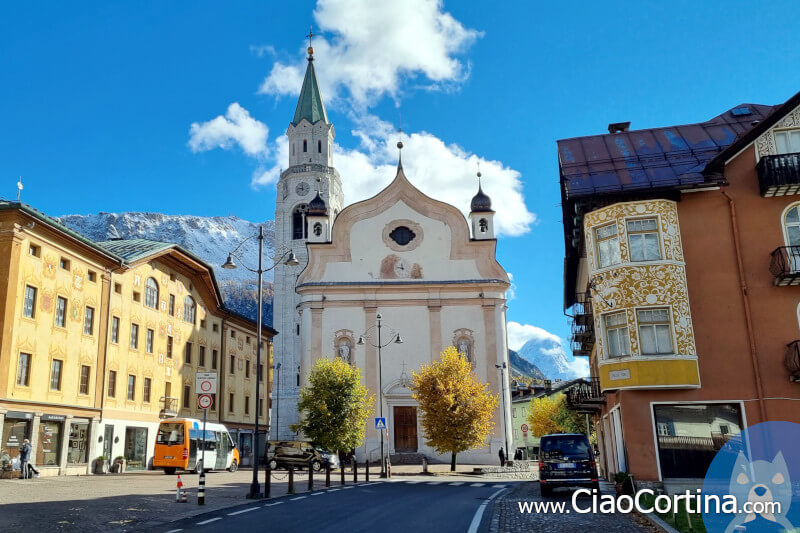
The history
The bell tower of Cortina, as we know it today, was erected by Silvestro Franceschi to replace the old bell tower from 1590. It was quite anonymous and was beginning to show some signs of abating.
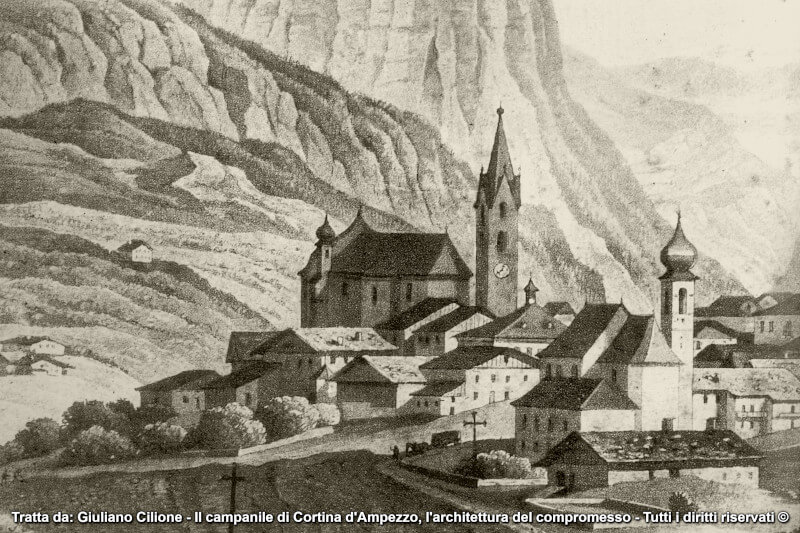
The problems began with the cracking of a bell, but then worsened when pieces of stone and lime started to detach from the structure. To avoid further accidents, in 1846, the municipality of Cortina decided to demolish the previous bell tower to build a new one.
A temporary wooden bell tower was erected to continue to notify the passing of the hours. It was a time when few people had a watch on their wrists, and a way to signal liturgical celebrations and prayers was necessary.
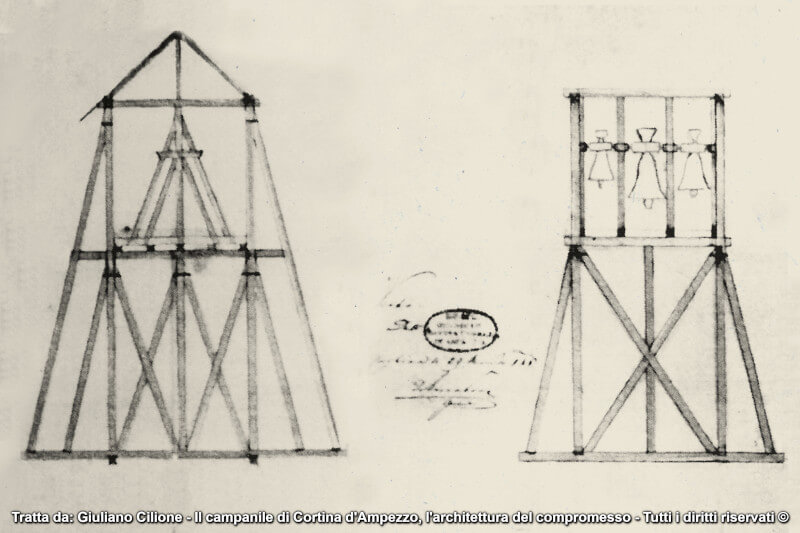
After evaluating many different projects, the municipal administration decided to follow the idea of the engineer Hermann Bergmann from Vienna, who designed a bell tower in neo-Gothic style that was neither Tyrolean nor Cadorean. This decision was certainly conditioned by the nature of the inhabitants of Ampezzo, who felt neither completely Italian nor completely German, because of the autonomy that Cortina has always had.
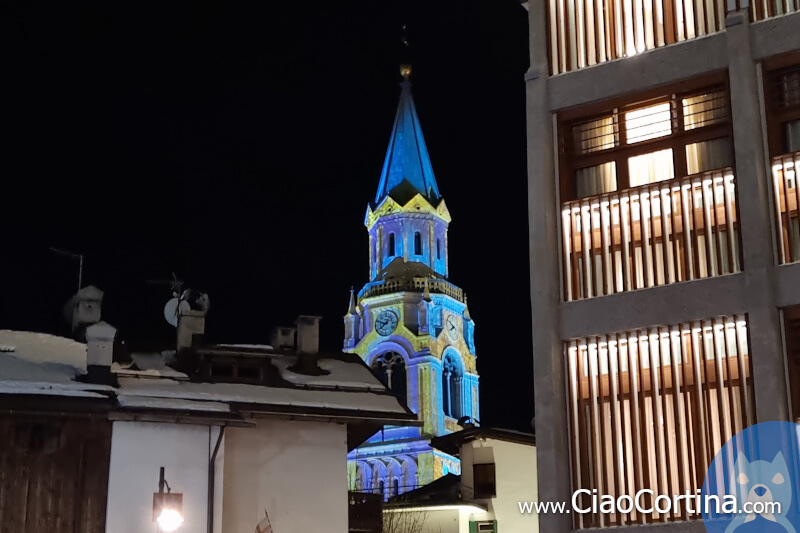
The bell tower was built in "Dolomia," the same white stone of which the Dolomites are made. A perfect quarry for this type of rock was identified in the "Crepedel" area, near "Acquabona," a district of Cortina.
The name of the locality comes from the dialect word "i crepe," translated as "the rocks" or "the mountains," because in that locality the rocks of Mount Faloria start to rise from the meadows. If you want to know why the stone of the Dolomites is so clear, you may read our page about the geological history of the Dolomites, which can be found below:

The excavation of the foundations began in May 1852, but it was necessary to wait until 1858 to hear the first sound of the bells. The whole construction went through a series of logistical, administrative, and social problems that are narrated in detail in the book "El Cianpanín, storia del campanile di Cortina d'Ampezzo" by Mario Ferruccio Belli. You will find it better cited in the sources at the end of the article. For the more curious, next, we summarize the main points:
- The bell tower would have risen on ground that was unable to support all that weight . A large hole was dug, and 400 larch trees were buried into the ground to give more structure to the foundations. The same technique was also used in the construction of the city of Venice; the foundations of the most beautiful city in the world are reinforced with trees from the forests of the Dolomites.
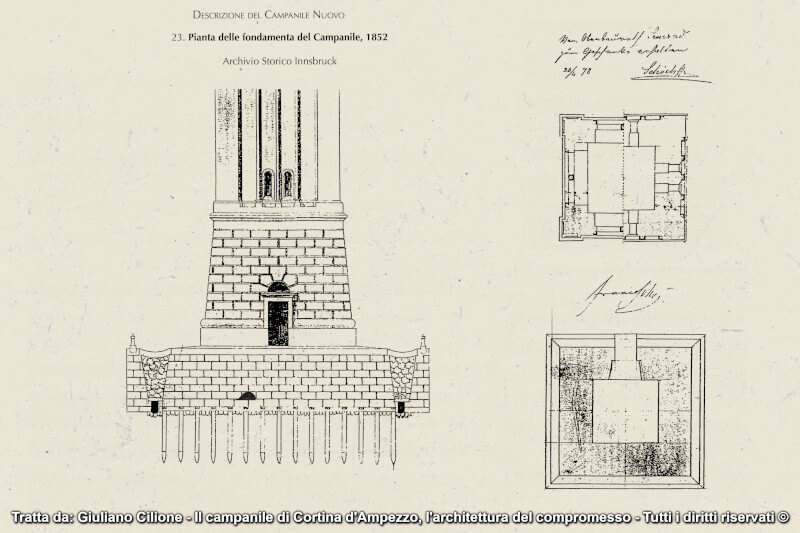
- In the meantime, in the quarry of "Crepedel," the stones necessary for the construction of the walls were being cut and transported to the town on the back of oxen.
- The stones, cut to the correct size by the stonemasons, were used to make the base and the walls of the tower. Every year, the construction went up by a few meters. Before the arrival of the winter, the construction site was closed, the highest point was marked with the current year, and everything was paused for the winter.
- The following spring, the construction started again, stone by stone, up to the belfry. Here a large wooden structure was built, where the bells would then be installed, behind the openings from which the sound would come out.
- The structure continues entirely in stone up to the roof, made of copper with an internal wooden structure.
- For more complex works, such as the balustrade and the pinnacles, the local stone was not ideal. It was therefore decided to use less friable granite, extracted from the quarry of "Falzes" in the near "Val Pusteria."
 Help us stay ad-free with a small offer.Donate now!
Help us stay ad-free with a small offer.Donate now!
The bells
Such a majestic bell tower must have a concert of bells that is at the same level; for this reason, the administrators of Cortina, despite the large expenses already incurred, did not want to save. There was a company in Innsbruck that was very serious, and they were well known in their sector. At the time, it was called today, it's still "Grassmajer;" today, it's still active under the name of "Grassmayr." Here you can visit their official website, but it's only in German. The initial idea was to use three bells, as they were originally, but later it was decided to upgrade to a six-bell chime, harmonized in the key of Bb.
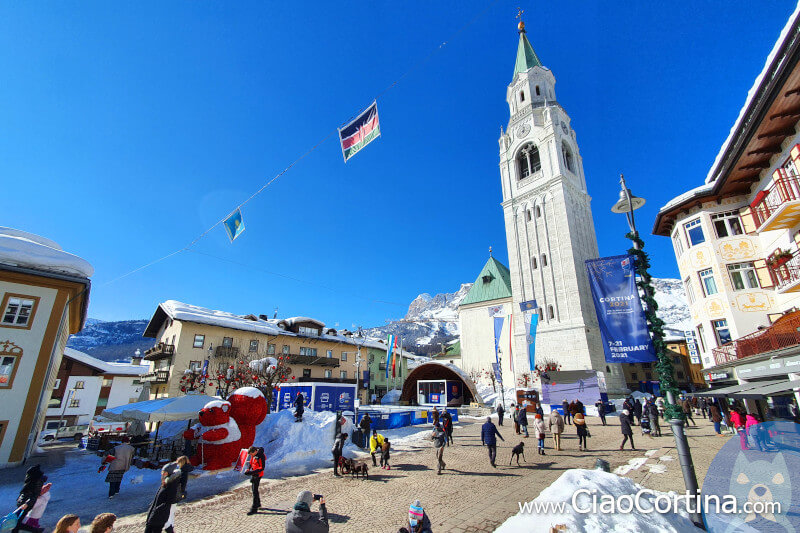
The bells were composed as follows:
- The small one in F (weight: 120 kg)
- The second in D (weight: 192 kg)
- The third in Bb (weight: 361 kg)
- The fourth in F (weight: 860 kg)
- The fifth in D (weight: 1.455 t)
- And finally the large one in Bb (weight: 3.074 t)
The bells are the same that were forged in 1857. Probably not everyone knows that most of the bells that can be heard in Italy nowadays are not originals; they are copies. World War I required huge quantities of lead to make guns, and church bells were the easiest way to get it.
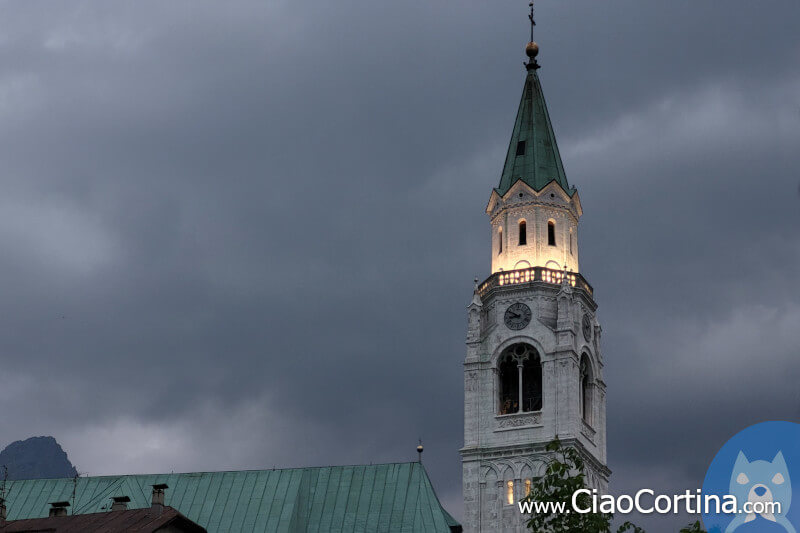
The bells of Cortina, however, were saved thanks to the emperor Carlo of Austria, who, passing through the Ampezzo area and hearing the sound, decided to save them from the forge because he loved it. In memory of this event, a commemorative plaque was placed on the bell tower door. Consider that more than 1048 bells were forged by the "Grassmajer" company before the war, but nowadays only nine survive, six of which are in Cortina.
 Help us stay ad-free with a small offer.Donate now!
Help us stay ad-free with a small offer.Donate now!
Curiosities
Before concluding, we want to tell you some curiosities about the Bell Tower:
- During the construction of the bell tower, there were no serious accidents, no severe injuries, and no deaths, despite the heights at which the builders worked. .
- The golden sphere at the tip of the bell tower has a diameter of one meters and ten centimeters, or forty-three inches, and is made of copper, covered with a thin layer of pure gold. In order to coat the sphere in gold, 60 gold ducats were melted down. .
- There is no precise number for the price of the construction because the registers were lost, but it is estimated that the Austrian Empire spent 200,000 florins on it, compared to an estimation of 70,000. The amount was completely paid by the community of Ampezzo. The figure includes all expenses, including the bells and the clock, and can be converted, approximately, into a current figure of five million euros. .
- To try to contain the costs, the bell tower was slightly shortened compared to Bergmann's original design. Fortunately, this thing goes almost unnoticed, but if you look carefully at the bell tower from the terrace of the Hotel Ancora, you will notice that it's a little squat. The base was shortened by almost two meters, or eighty inches, and the space under the first window was reduced. If you are passionate about the topic, we invite you to read Giuliano Cilione's book, which we will mention below in the chapter with the sources, where the topic is discussed in depth. You can find it at the Cortina library. .
- Although it has been open to the public for several years in the past, the bell tower is currently closed. Occasionally, some illustrious guests are accompanied to the top, where they can enjoy an amazing panorama. .
- In 1999, the belfry was completely restored and made safe. Before that date, climbing the bell tower was not recommended for those suffering from vertigo. Even today, the ascent is quite challenging for those who fear heights. We speak from direct experience. I can't imagine how frightening it could have been before the creation of the parapets.
- In 2006, there was another major restoration for the safety of the exteriors of the tower because of the detachment of some stones from the parapet. It has also been cleaned, with the aesthetic restoration of all the stones and wood parts.
- It has been debated for years about the actual height of the bell tower, but during the restoration of 2006 it was measured with extreme precision: the cusp reaches seventy meters and seventeen centimeters, or two hundred and thirty feet, while the tip of the cross stands at seventy three meters and twenty seven centimeters, or two hundred and forty feet. In the "bar stories," there was a tendency to raise it by some measure. When I was young, I can remember being told it was about seventy eight meters, or two hundred and sixty feet.
- The clock of the bell tower was made by the Lacedelli brothers, from "Meleres," a hamlet of Cortina. It weighed 400 kilos, and it can be seen from all four sides of the tower. It was also large enough to be readable from all over the valley. It worked for over 100 years, until the 1970s, when it was replaced by a more modern one. The original mechanism can be seen at the ethnographic museum of the "Regole d'Ampezzo," of which you can read in our article below:
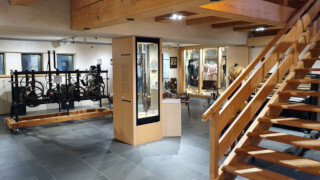
Our sources
This page is inspired by the beautiful book "El Cianpanín, storia del campanile di Cortina d'Ampezzo" by Mario Ferruccio Belli, where the author describes with many details the building of the bell tower, alternating it with original documents of the times, photographs, and curiosities. It is a beautiful book to buy or give as a gift, but consider that it's written in Italian. The title can be translated as "El Cianpanín, history of the bell tower of Cortina d'Ampezzo."
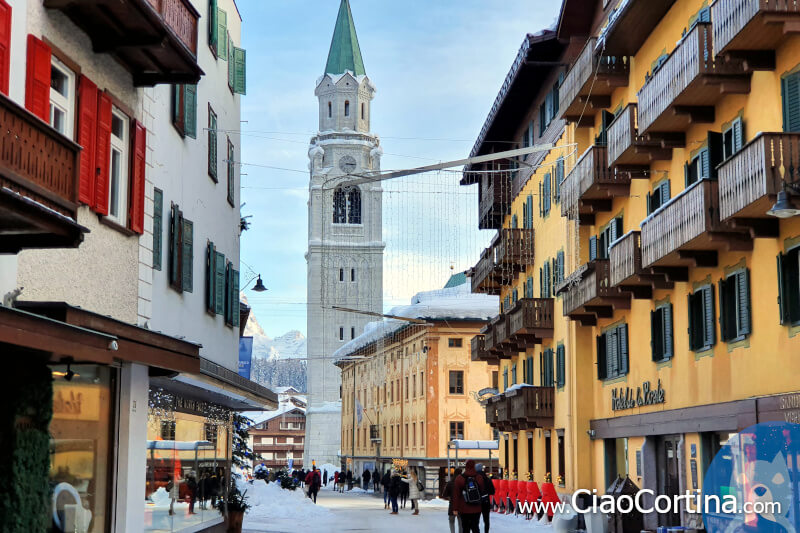
Many of the more technical information and some pictures have been extracted from the book "Il campanile di Cortina d'Ampezzo, l'architettura del compromesso" by Giuliano Cilione, which you can find in the civic library of Cortina. The text contains very interesting insights into the aesthetics and proportions of the bell tower, seen with the expert eye of an architect. We thank the author for reporting it to us and for allowing us to use some images. It's also written in Italian, and its title is translated as "The bell tower of Cortina d'Ampezzo, the architecture of compromise."
Conclusion
We hope you liked this page on the bell tower of Cortina d'Ampezzo. Before saying goodbye, we would suggest you read our home page, with all the articles we wrote about Cortina d'Ampezzo.
If you want to thank us you can read the page Support us. If you only want to suggest a change, propose something or just say hello, in the section contacts and info, you'll find all the ways to reach us.
